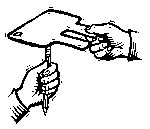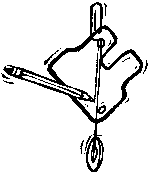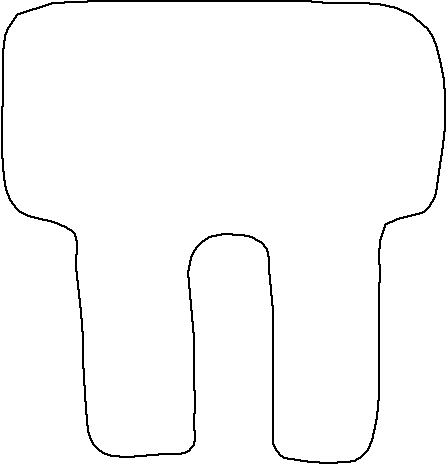Secrets of Lost Empires I—Stonehenge
|  |
Student Handout |
The Great Trilithion Balancing Act
To position the massive trilithon stone into the hole, the NOVA team
didn't push or pull it—instead, they used the weight of the stone itself to
tip it into position. They added weight to the front end, making it heavier.
This shifted the stone's center of gravity and caused it to topple into the
hole. How can you change an object's center of gravity? Try this activity and
find out.
Part I
Cut out the Great Trilithon outline. Trace the shape on a piece of cardboard and cut it out.

Observe the shape of the Great Trilithon and predict where the center of gravity is located. Then try to balance it at that point on the eraser end of a pencil.
Part II
Try locating the exact position of the Great Trilithon's center of gravity using the method described below.
Finding the Center of Gravity
Punch two holes near any edge of the Great Trilithon. Label the holes with A and B.

Bend one end of a paper clip so that it forms an "L" shape. Tie one end of the string to the paper clip and the other end to a washer.

Insert the paper clip through hole A, so that the Great Trilithon hangs freely from that point. Draw a line on the Great Trilithon that follows the vertical line of the string.

Hang the Great Trilithon from hole B. Draw a second line that follows the vertical line of the string. The center of gravity is where these two lines intersect. Test it out by trying to balance the Great Trilithon at this point.
Next, measure down 5 cm (2 in.) from the top of the Great Trilithon, and cut it as illustrated. Predict where the center of gravity is now. Use the method you used earlier to locate the center of gravity. Where is it located? Can you balance the Great Trilithon on the pencil at the center of gravity like you did before? Why or why not?

Add paper clips as weights to the trilithon to change the center of gravity. Try placing the paper clips in different positions until you are able to balance the Great Trilithon on the pencil again.

|


